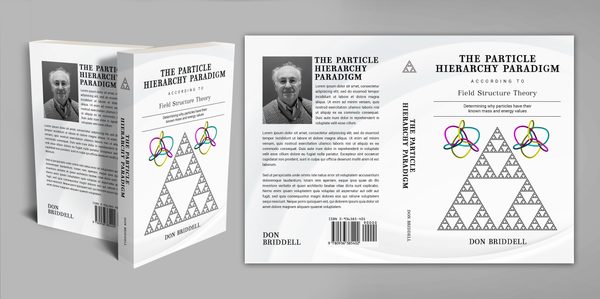The Particle Hierarchy Paradigm
$45.00
How particles are structurally formed from an underlying Plenum to produce reality.
This is not an arcane mathematical thesis. The analytic used is simple, shockingly simple. There is a way to understand matter and energy quantitatively using macroscale constructs your grandmother can understand. It turns out physics isn’t hard to understand when the structure is properly known. The analytic being used is called Tometry, 3-D, structural, skew, fractal, topology and is accomplished with macroscale material models you can hold in your hand.
Physics has been trying to figure out the structure of the universe for a hundred years. Seeing that physics has not produced a unified theory about the universe, I decided there must be something about the analytic being used that is obscuring the endeavor. Being fascinated with exploring empirical form and structure, beginning in college I instinctively looked to real-world structure for answers and not to the mathematics that physics was using. A new analytic was needed. That analytic, applicable to physics, has become known as “Structural Physics”. My college thesis partner in this endeavor was Stanley Wysocki. He and I at Pratt Institute, Brooklyn, NY developed in 1965 a new geometry, now called Tometry. Tometry when applied to the natural world produced Field Structure Theory. This book begins the exploration of this new paradigm in physics by singling out one crucial problem in physics i.e., how to explain the mass and energy values of particles.
Presently, physics is using Quantum Mechanics (QM) and the Standard Model (SM) to solve the question of how do particles get their mass values. These theories have not given us neither a unified vision of how the universe is structured, nor definitive insight into its structure. Physicists knows, but seldom says that QM gives only approximations that are not wrong, but not sufficiently right as to give us a true and accurate structural understanding. The internal and individual structure of energy and matter are still in question. QM is a set of generalities that can predict certain aspects of electron’s group behavior, but not the structure of a single electron. QM’s projection of what a particle or atom looks like is structurally primitive. Field Structure Theory has found a way to penetrate into the inner workings of particles and atoms to reveal their individual structure and how they interface with the pervasive Plenum from which they are derived. While this is a bold claim, I encourage the reader to follow the reasoning and let the structure of the universe be revealed in layman language (there is some simple math). It’s a new paradigm.
The book is available at your local bookstore or through Amazon.com
Kindle eBook = $9.99
Paperback = $31.50
Hardback = $34.50
Book: size: 9” x 6”, made in the USA
Pages: 147 with 69 illustrations (most in color)
Only available through the publisher on this site, the author is offering a Collector Edition limited to one-hundred copies that use premium paper and color, signed, remarked and numbered.
Related Items


Passing Comets
$37.50
A collection of short terse comments that pass like comets in the night sky. These comments are what remains after...








